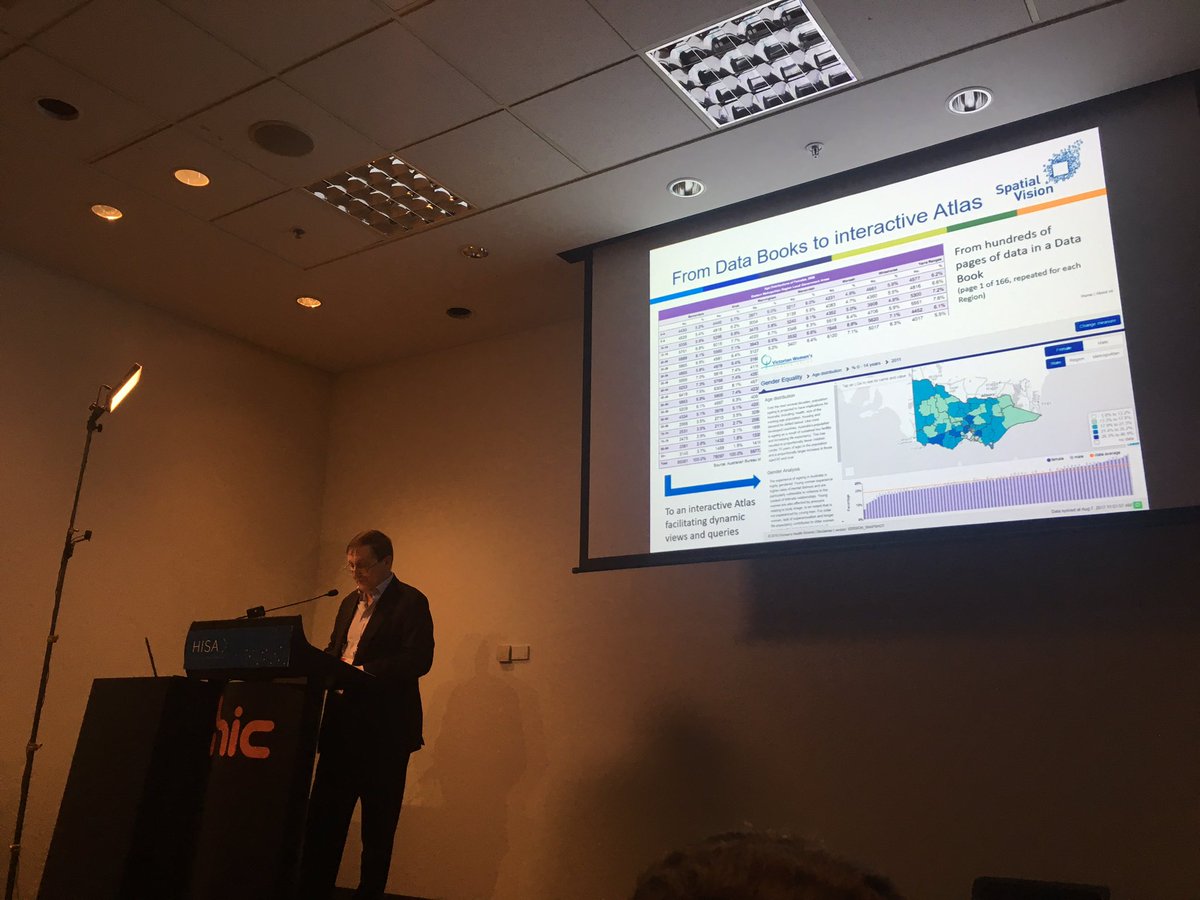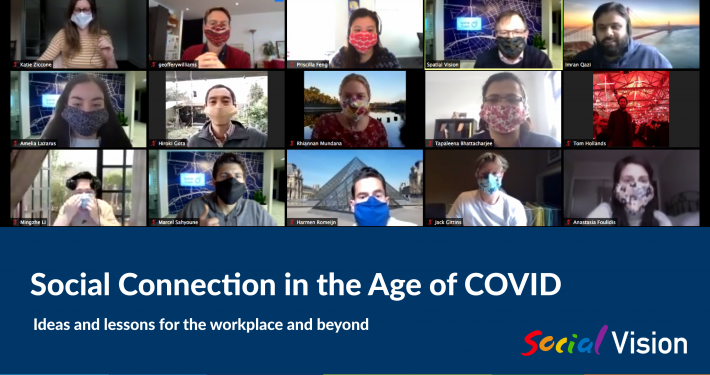Last week I attended the HIC Conference in Brisbane. This conference was run by the Health Informatics Society of Australia (HISA) and highlighted innovation and the digital transformation of the healthcare sector.
There was a focus on the central role that information and health informatics brings in connecting the health care system, being smart with data, and enhancing practitioner and consumer experience in healthcare interactions.
I was very pleased to present details of the Victorian Women’s Health Atlas that Spatial Vision has developed for Women’s Health Victoria, the state-wide and regional women’s health service. The Atlas is an innovative, interactive web-based resource that provides sex-disaggregated data across a range of priority health issues for women. This useful resource provides spatially enables analytics and visualisations for a wide variety of indicators across six themes. The purpose of the Atlas is to increase the availability of reliable data for evidence based decisions about service design, emerging priorities and program planning.

At the Conference, we heard that the Australian Digital Health Agency (ADHA) has released Australia’s digital health strategy which aims to evolve health care to meet the future needs of Australia.
The Strategy proposes seven strategic priority outcomes to be achieved by 2022.
- Health information that is available whenever and wherever it is needed.
- Health information that can be exchanged securely.
- High-quality data with a commonly understood meaning that can be used with confidence.
- Better availability and access to prescriptions and medicines information.
- Digitally-enabled models of care that drive improved accessibility, quality, safety and efficiency.
- A workforce confidently using digital health technologies to deliver health and care.
- A thriving digital health industry delivering world-class innovation.
Five million Australians have already been set up with a My Health digital record which is expected to increase to 98% of the population by 2018, the highest participation rate in a national health record system in the world.
The HIC was very well attended and showcased a broad range of innovative solutions from a wide range of IT and related technologies. But I did note that members of the spatial industry were conspicuous in the absence. Given the pressing need to improve productivity and effectiveness, it is clear that the spatial industry has much to offer across the health sector.
For more information, please call on 1300 366 796, email here or visit http://spatialvision.com.au
- 2020 Impact: Industry Trends and Developments - December 18, 2020
- The UN World Geospatial Information Congress - December 11, 2018
- Health Informatics Conference - September 7, 2017






